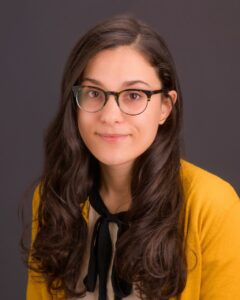
As teeth grow from their germinal state as soft blobs of tissue to hard nuggets complete with enamel and roots, bones in the jaw are also taking shape. Scientists have understood that developing bones respond to the tissue and spaces around them, including primordial teeth, but the mechanisms aren’t fully explained. Kristen Prufrock, PhD, Assistant Professor in the Department of Neuroscience at Washington University School of Medicine, is teaming up with anatomists from several other institutions to identify the cellular principles governing how facial bones take shape. The team has received a $600,000 grant from the National Science Foundation to develop 3-D reconstructions of dental and bone features throughout developmental stages and produce models that explain the role of the developing dentition in driving facial form.
The researchers will examine samples from multiple species of lemurs and monkeys. These primates vary in the pace of tooth development and in snout length, giving the team an opportunity to predict facial features from aspects of pre-erupted teeth. Collaborator Valerie DeLeon’s lab at the University of Florida will use high-resolution microCT scanning to visualize and quantify the soft tissue three-dimensionally as Prufrock constructs 3-D models of the chewing muscles and tracks jaw bone mineralization. This is complemented by the work of Timothy Smith’s group at Slippery Rock University and Anne Burrows’ team at Duquesne University, who will be labeling tissue with markers for spatial patterns of cellular activity along the perimeter of tooth germs as they relate to the state of ossification of the developing jaw.

COURTESY TIMOTHY SMITH
Results from the project will help clarify the cellular underpinnings of what’s known as Functional Matrix Theory—the idea that bone takes direction from the soft tissue and spaces around it during development. “Although we are still learning about the gross impacts that soft tissue and spaces have on bone, there is much to learn about how bone senses and responds to these influences at the cellular and tissue level,” said Prufrock.
The group will freely share its models for research and teaching. “We are firmly committed to open science,” said Prufrock. “Our 3D models will be made freely available to the research community via MorphoSource and Sketchfab. These products will also be incorporated into a website (SkeletalGrowth) with learning modules for K-12 students.”